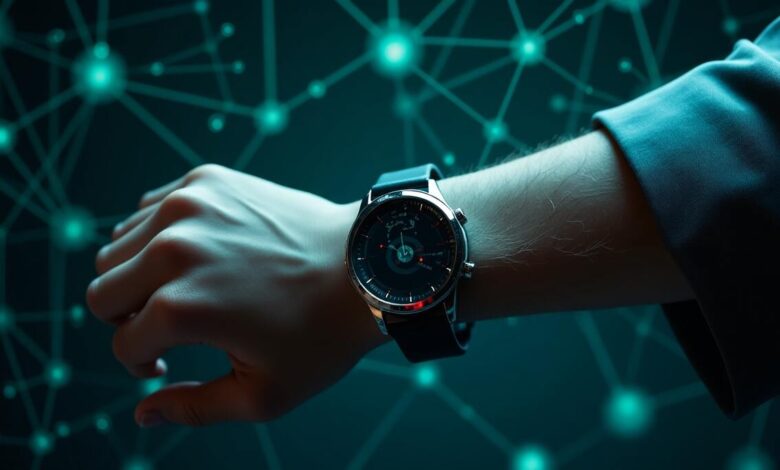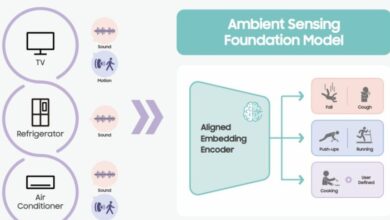The Dark Side of Wearable Health Monitoring Devices: Ethical and Privacy Challenges
Wearable Health Monitoring Devices

Wearable Health Monitoring Devices: Millions of us are happy to use wearable health monitors that track our steps, heart rate, and sleep patterns. Yet we rarely think about the darker implications of sharing our most personal health data.
Health trackers have transformed how we monitor healthcare. This transformation has unlocked a Pandora’s box of privacy concerns and ethical challenges. Data breaches, corporate surveillance, psychological effects, and healthcare discrimination highlight the downsides of wearable technology. A conflict exists between technological convenience and personal privacy.
Our growing dependence on health wearables comes with hidden costs. This complete analysis will explore these costs – from data security weaknesses to the subtle ways these devices reshape our relationship with health.
The Hidden Costs of Continuous Health Monitoring
People’s relationship with wearable health monitoring devices has grown more complex. These tools meant to strengthen us often become unexpected sources of stress and anxiety. Smart watches bring psychological costs that rarely cross our minds when we put them on.
Psychological Impact of Constant Tracking
Research shows that 70% of users develop heightened anxiety about their health from constant monitoring. A troubling pattern has emerged where these devices create an opposite effect from their intended wellness goals. A newer study shows 15-20% of patients feel intense fear or anxiety when they get automated alerts from their wearable devices.
The psychological toll becomes clear in our daily lives. People check their heart rate multiple times daily. This creates a cycle of compulsive monitoring that adds stress instead of peace of mind.
Social Implications and Relationships
Health monitoring around the clock changes our social connections and how we interact with others during activities. Some users skip their workouts completely if they forget their tracking device. This behavior shows our growing dependence on these digital companions.
- Common social impacts include:
- Decreased enjoyment of physical activities
- Constant comparison with peers
- Reduced focus on social interactions
- Heightened performance anxiety
Digital Anxiety and Health Obsession
Medical experts worry about “digital health anxiety.” Research indicates that nearly 30% of people who obsessively track their health metrics develop anxiety about those numbers. This issue has grown so much that medical professionals note how these devices contribute to pathologic symptom monitoring and impaired function.
The endless stream of data creates an “autonomy paradox.” While these devices seem to offer more control over our health, they reduce our confidence in understanding our bodies naturally. Research participants exposed to their health metrics felt more negative, showed lower self-esteem, and had higher blood pressure when data didn’t match their expectations.
The numbers paint a concerning picture – 80% of health trackers feel more anxious after they keep taking their biometric readings. This anxiety shows up as obsessive metric checking and unhealthy fixation on achieving “perfect” numbers.
Data Privacy Vulnerabilities Exposed
The recent surge in data breaches affecting wearable health monitoring devices shows alarming vulnerabilities in our digital world. A shocking discovery revealed that over 61 million Apple and Fitbit users had their personal health data exposed in a single breach.
Common Security Breaches in Wearables
Security breaches have reached unprecedented levels, with 98% of IoT device traffic completely unencrypted. These breaches expose sensitive information like names, birthdates, weight, height, gender, and geographical location.
The security situation becomes more worrying when you look at these vulnerabilities:
- Users rarely change default usernames and passwords
- Software and firmware remain outdated
- Authentication systems lack strength
- Data moves without encryption
Third-Party Data Access and Sharing
Our research shows that wearable device data exists in a gray area of third-party sharing. Companies keep the collected data “shielded from public scrutiny” and use it however they want without our knowledge. They sell this information to vendors, marketing companies, and insurance providers.
The scary part? Clicking “agree” on these devices means we unknowingly give consent to share our data with multiple third parties. These practices go beyond the device maker and include marketing companies, analytics firms, and other entities that store our information on servers worldwide.
Identity Theft Risks
Medical identity theft has become a serious problem due to these privacy issues. Criminals use stolen health information to get medical care, prescription drugs, and file false insurance claims. The damage goes beyond money – a thief’s health information mixed with yours can lead to wrong medical care.
Health care records serve as a rich source of information for identity thieves because they contain more personal details than most other businesses. Recent cases show that stolen medical identities led to fraudulent charges between $8,000 and $24,000 in just one instance.
These breaches happen through several routes including stolen devices, wireless interception, and cloud breaches. Many wearable devices lack strong data protection systems, which makes them perfect targets for cybercriminals who want to steal personal health information.
Corporate Exploitation of Health Data
Companies have found that there was a goldmine in our health data. We now see an unprecedented rush to profit from our most personal information. The health data monetization market will reach a staggering $707.86 billion by 2025, which shows the massive financial stakes at play.
Monetization of Personal Health Information
Apple, Google and other major tech companies benefit the most from health data collection, while users get very little in return. Our wearable devices generate data that has become more valuable than our financial details in consumer data markets. The exploitation of this data happens in several ways:
- Companies sell data to brokers without telling users
- Multiple corporate platforms share our information
- Users have little control over their data
- Current laws don’t protect privacy enough
Insurance Company Access and Discrimination
Insurance companies make use of information from our wearables, which raises serious concerns. They can use this data to make important decisions about our coverage. Some companies offer rewards when we share fitness data, but nothing stops them from using this information to raise premiums or deny coverage.
This creates serious problems because insurance companies analyze our daily activities through their partnerships with data processing firms. United Healthcare’s program with Fitbit shows how they collect detailed activity data that could determine who gets coverage or how much they pay.
Marketing and Targeted Advertising
Health data drives aggressive targeted advertising campaigns. Studies show 70% of shoppers would trade their personal information for promotional deals. Most people don’t know how extensively their data gets shared behind the scenes.
The situation raises several red flags:
- HIPAA regulations don’t protect health data from wearables
- Companies combine anonymous data with other sources to identify people
- Third parties access our health information without asking us first
Trust levels tell an interesting story. While 44% of consumers trust healthcare organizations with their data, only 17% place their trust in technology companies. These tech companies still collect and profit from our health information through complex data-sharing networks that most people can’t understand.
Impact on Medical Decision Making
Wearable health monitoring devices have created a complex web of challenges in medical decision-making for healthcare providers and patients. Medical decisions now follow a completely different approach, and this brings far-reaching implications.
Over-reliance on Wearable Data
Healthcare providers struggle with the overwhelming amount of data from patient wearables. Doctors say they can’t properly interpret or use the massive information patients send them. These devices pose a real challenge because they aren’t medical-grade equipment, which makes it hard for healthcare professionals to base clinical decisions on their data.
The challenge becomes clear when you look at these factors:
- Consumer wearables lack standardized measurements
- Data requires extensive context for medical relevance
- Different devices may measure the same metrics differently
Doctor-Patient Relationship Changes
Doctor-patient interactions have transformed dramatically. Wearables support shared decision-making but create new pressures on medical professionals. General practitioners report heavy workload pressure and strained relationships with patients due to instant data transmission.
Medical professionals should lead clinical decision-making even though digital monitoring helps patients understand their conditions better. This creates a delicate balance between strengthening patients and maintaining professional expertise.
False Alarms and Unnecessary Interventions
False alarms create serious problems in patient care. 67% of participants who received any alert experienced false notifications. These false positives cause real issues beyond minor inconveniences.
Research shows that patients receiving false alerts experience a measurable decline in their physical health perception and disease self-management. Only 34% of participants with irregular pulse alerts received confirmed diagnoses in atrial fibrillation monitoring.
Problems go beyond individual worry. Healthcare costs rise due to unnecessary medical interventions, and patients often stop beneficial monitoring because of false alarms. Older adults feel these effects more strongly because they’re less familiar with digital health technology and react more to false alerts psychologically.
Patients prone to excessive symptom monitoring often experience needless anxiety and medical interventions. This affects their mental well-being and leads to wasteful use of healthcare resources.
Socioeconomic Disparities in Digital Health
The sort of thing I love about wearable health monitoring devices reveals a troubling reality. These tools should democratize healthcare but instead create new forms of inequality. The digital health revolution might leave behind those who need it most.
Access Inequality Issues
A stark divide exists in the accessibility of these life-saving technologies. People with cardiovascular disease who earn $50,000 or more annually use wearables four times more than those earning less than $20,000. Education levels make this gap even wider. People with post-graduate degrees show 3.6 times higher wearable usage rates compared to those with lower education levels.
Racial and ethnic minority groups face additional hurdles that go beyond income and education:
- Lower income levels limiting device access
- Reduced access to healthcare resources
- Limited health literacy opportunities
- Technical infrastructure challenges
Cost Barriers to Quality Devices
Financial hurdles create a major challenge in wearable health technology adoption. Cost remains the biggest barrier to widespread adoption. Social Security recipients and people living on fixed incomes find these devices too expensive.
These devices are mostly available to tech-savvy individuals with higher income levels. This creates a paradox where under-resourced communities that need health monitoring the most face the greatest barriers.
Digital Literacy Challenges
Digital literacy barriers exist alongside financial constraints. Successful wearable use needs high technical proficiency, which creates particular challenges for:
- Older adults struggling with device setup
- Individuals with limited technological experience
- People facing language barriers
- Rural populations with limited technical support
Users with low technological and health knowledge experience additional stress from device complexity. Many potential users need extensive education and hands-on support, including in-person help for setup and ongoing technical assistance.
Nearly half of health-related app users eventually quit. They cite confusion with app usage and overwhelming data entry requirements. Older adults and minimum wage earners rarely own or maintain these devices.
The challenge grows when health resources use language at a 12th-grade reading level or higher. This is nowhere near the recommended 6th-grade level for medical educational materials. Users already struggling with digital literacy face another obstacle.
Technical limitations affect specific populations in concerning ways. State-of-the-art devices may not work accurately for people with darker skin tones. This technical shortcoming adds to existing structural health disparities, especially for Black Americans.
The Autonomy Paradox
Technology promises better health through wearable monitoring devices. Yet these tools that claim to give us more control over our health quietly erode our autonomy. This paradox sits at the core of our growing dependence on digital health monitoring.
Loss of Personal Health Agency
People’s relationship with their bodies shows a troubling change. Research indicates that about one-fifth of Americans rely on wearables to monitor their health. Users trust their devices more than their body’s signals, which creates a worrying pattern. Extended use of technology-supported monitoring leads many users to lose their natural ability to maintain improvements without these devices.
Our health agency weakens in several critical ways:
- Less confidence in natural body awareness
- Reduced natural health behavior control
- Too much focus on numerical metrics
- Less trust in personal health decisions
Algorithmic Dependencies
The technical foundation of these devices brings its own challenges. The biggest problem lies in consumer device quality, which remains too low for reliable medical use. Users become dependent on potentially unreliable algorithms, creating a dangerous situation.
These algorithmic dependencies affect our decisions significantly. Health data analysis through supervised machine learning algorithms grows more complex. Most current algorithms analyze homogeneous data from one source, yet our health patterns remain complex and multi-faceted.
Behavioral Manipulation Risks
These devices shape our behavior in unexpected ways. Users often change their habits based on device feedback, sometimes counterproductively. To cite an instance, some people reduce their activity after learning they’re more active than expected, while others obsess over achieving “perfect” numbers.
This manipulation goes beyond individual behaviors. Concerning trends emerge:
- Corporate Control
- Consumer technology companies gain unprecedented influence over health decisions
- Users have limited access to their own data benefits
- Data collection creates economic and political advantages for corporations
- Trust Issues
- Users place too much trust in device validity
- Over-reliance poses greater health risks than not using devices
- Many experience doubt and anxiety about data reliability
About 80% of health tracker users report increased anxiety after regular biometric monitoring. This anxiety reflects a deeper loss of autonomy as people rely more on these devices for simple health decisions.
The benefits of health monitoring through wearables flow mainly to consumer technology companies rather than users. This creates an imbalance where health data becomes a corporate profit tool instead of personal improvement.
Users develop “trained helplessness” after extended technology support. They struggle to maintain improvements without devices. This dependency cycle strengthens our reliance on these technologies while weakening our natural ability to understand our body’s signals.
Conclusion
Wearable health monitoring devices promise better control over our wellbeing. Yet their darker side needs our attention. Our analysis shows these devices create unexpected mental burdens, expose us to privacy risks, and might weaken our natural understanding of our bodies.
The problems are systemic and go beyond technical glitches. Data breaches have affected millions of users. Companies exploit our health information while socioeconomic gaps continue to widen. The biggest problem lies in what we call the autonomy paradox – these devices that should strengthen us often reduce our confidence in our natural health awareness.
This doesn’t mean we should abandon health technology. We just need to use it with greater awareness and careful thought. Users should ask questions about data collection, understand what it all means for privacy, and set healthy boundaries with their devices. Note that these tools work best when they support, rather than replace, our natural connection to our bodies.
Thoughtful integration that protects our privacy and autonomy will shape digital health monitoring’s future. Our alertness in protecting these vital aspects of our wellbeing becomes more significant as this technology evolves.
FAQs
Q1. What are the main privacy risks associated with wearable health devices? Wearable health devices often collect sensitive personal data that can be vulnerable to breaches. Common risks include unauthorized access to health information, data sharing with third parties without user consent, and potential identity theft. Users should be aware that their personal health data could be exposed or exploited if proper security measures are not in place.
Q2. How can wearable health devices impact mental well-being? While designed to promote health, these devices can sometimes have negative psychological effects. Constant health monitoring may lead to increased anxiety, obsessive checking of metrics, and reduced confidence in one’s natural body awareness. Some users report feeling more stressed about their health after regularly tracking their biometric data.
Q3. Are there socioeconomic disparities in access to wearable health technology? Yes, there are significant disparities in access to wearable health devices. Individuals with higher incomes and education levels are more likely to use these devices. Cost remains a major barrier for many, particularly those on fixed incomes. Additionally, digital literacy challenges can make it difficult for some populations, such as older adults or those with limited technological experience, to effectively use these devices.
Q4. How might wearable health devices affect the doctor-patient relationship? Wearable devices are changing how doctors and patients interact. While they can support shared decision-making, they also create new challenges. Doctors may struggle to interpret the vast amount of data from these devices, and patients might place excessive trust in the data. This can lead to unnecessary interventions, increased workload for healthcare providers, and potential changes in the traditional doctor-patient dynamic.
Q5. Can reliance on wearable health devices lead to a loss of personal health autonomy? Yes, there’s a risk of developing dependency on these devices. Users may begin to trust their devices more than their own bodily sensations, potentially losing confidence in their natural ability to understand and respond to their body’s signals. This can lead to a paradoxical situation where tools meant to empower users in managing their health actually diminish their sense of personal health agency.
Read More: NASA and SpaceX Technologies






